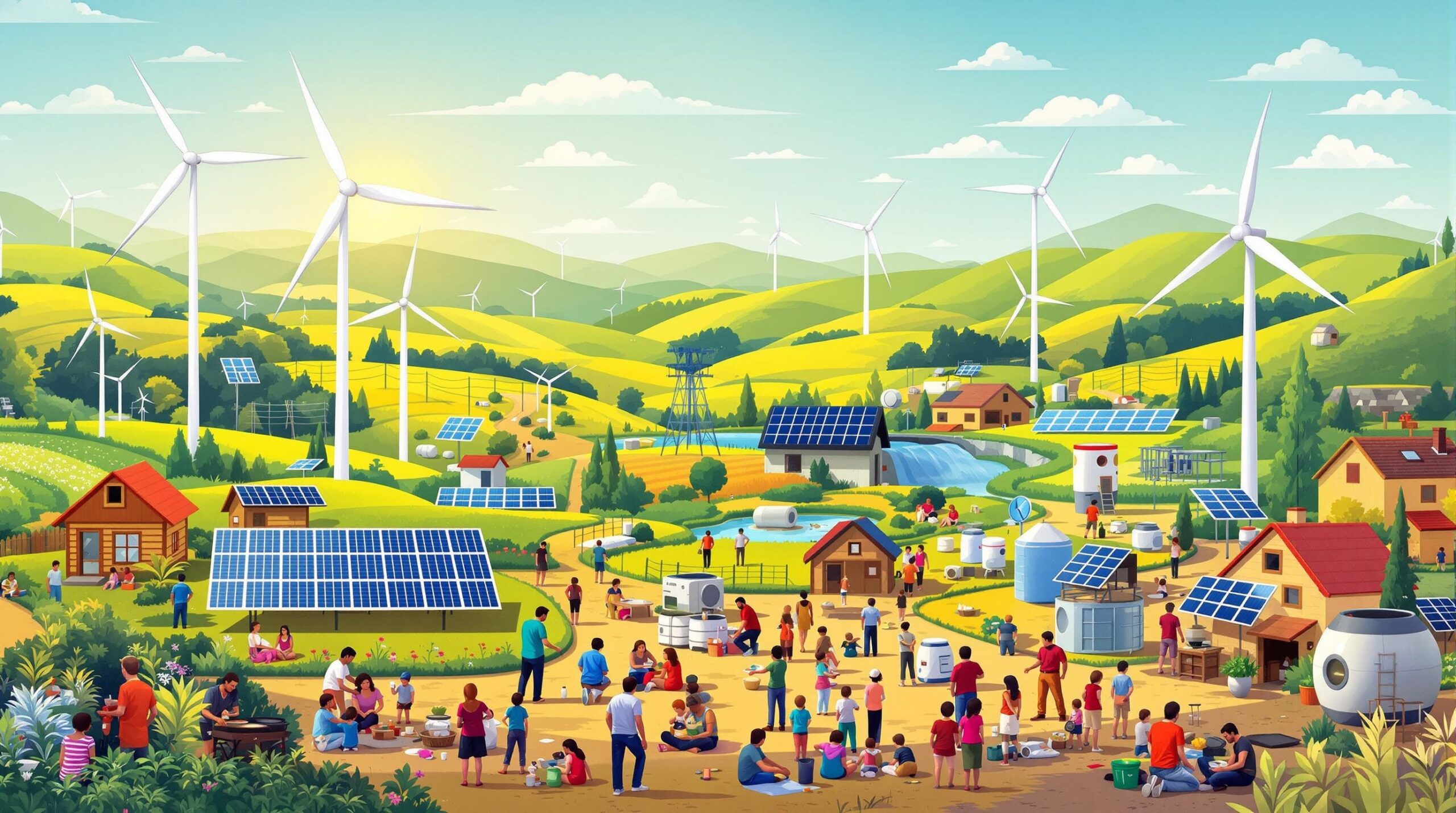Remote communities around the globe have long wrestled with energy access. Historically, many such regions lacked reliable grids, depending on costly and polluting diesel generators. Today, renewable energy devices are delivering a fundamental shift in how these areas receive power. Advances in off-grid and microgrid technology offer sustainable solutions, dramatically improving local living standards.
The Challenge of Power in Remote Communities
Many isolated communities sit at great distances from national electricity grids. Geographic barriers, such as mountains or forests, make infrastructure expansion prohibitively expensive. For decades, residents managed with candles, batteries, or fuel-based generators. These devices produce limited power, introduce pollution, and increase household expenses. Without reliable electricity, essential services like healthcare, education, and communications suffer.
Lack of electricity often means unreliable lighting and unsafe water. Hospitals cannot run sophisticated equipment, and schools may lack internet or computers. All these factors combine to slow economic development. Renewable energy devices promise to overcome these hurdles.
Types of Renewable Energy Devices Deployed
Several renewable energy technologies lead the transformation in remote regions. Solar photovoltaic (PV) panels top this list, converting sunlight directly to electricity. Local companies and aid organizations frequently install small solar home systems and solar streetlights. These devices range in size and can power simple lights or entire buildings.
Micro-hydro generators also play a crucial role. These systems harness the kinetic energy of flowing streams and rivers. Unlike large hydroelectric dams, micro-hydro setups do not require massive infrastructure, making them ideal for small villages. Communities with windy landscapes deploy small wind turbines for local power generation.
Battery storage units often accompany renewable installations. These batteries store surplus power generated during sunny or windy periods. At night or during calm weather, homes and institutions can draw energy from these reserves. Together, these devices provide clean, reliable, round-the-clock power.
Mini-Grids and Standalone Systems: Two Approaches
Communities use two main models to access renewable electricity: mini-grids and standalone systems. Mini-grids link several homes and businesses through a local network powered by renewable sources. Operators can manage the grid, enabling power distribution and usage tracking.
Standalone systems devise a personalized solution. These consist of individual solar systems serving single homes, a school, or a health post. Both approaches sidestep the need for expensive central grid extensions. Each solution offers flexibility to fit varying needs and community sizes.
Social and Economic Impacts
The arrival of renewable energy devices has delivered tremendous benefits. Household lighting extends productive hours. Children can study after dark, while entrepreneurs run businesses longer. Cold storage for food and medicine becomes possible, improving health outcomes and reducing waste.
Healthcare centers powered by renewables operate essential equipment. Vaccines remain refrigerated, and emergencies can be managed more effectively. Education has leaped forward in many regions, thanks to electricity for computers, projectors, and reliable internet connections.
Clean energy technologies also create local employment. Villagers find jobs as technicians or sales agents for solar kits and battery systems. Communities with stable power attract more investment and businesses. These ripple effects stimulate the local economy.
Environmental and Health Benefits
Switching to renewable devices slashes fossil fuel dependence. Diesel generators spew harmful smoke; solar panels and wind turbines do not. By breathing cleaner air, residents experience fewer respiratory illnesses.
Reduced fuel transportation also preserves fragile local ecosystems. Fewer trucks passing through sensitive areas means less risk of spills and habitat destruction. These changes foster both community health and environmental protection, benefiting future generations.
Case Studies of Transformation
Sub-Saharan Africa
In Tanzania, more than 500 villages receive clean energy thanks to small-scale solar and mini-hydro systems. Students use electric lights for homework, and markets now have cold storage. Women’s groups utilize sewing machines powered by their own community’s mini-grid.
Nepal’s Mountainous Regions
Nepal’s highland communities face immense grid extension challenges. Locals have adopted hundreds of micro-hydro generators. These devices operate grain mills, irrigate crops, and power schools. The change has unlocked economic potential in previously isolated villages.
Isolated Islands in Southeast Asia
Remote islands often rely on expensive and unreliable diesel shipments. Indonesian islands now employ solar microgrids and battery systems. These systems enable consistent power for refrigeration, water pumping, and communications.
Challenges and Opportunities Ahead
Despite tremendous progress, obstacles remain. Initial investment costs for quality equipment may still be prohibitive for many villages. Technical skills to maintain and repair devices need to grow. Additionally, some communities face policy roadblocks or lack supportive regulations.
Solutions include pay-as-you-go models and microloans to defray upfront costs. Partnerships between governments, NGOs, and private companies expand access and training. Continued cost reductions for solar panels and batteries are making electricity more affordable each year.
The Future of Renewable Access for Remote Regions
Renewable technologies are becoming more advanced and easier to deploy. Innovations like smart meters, cloud monitoring, and mobile payments simplify management and make scaling up more feasible. Communities now have more control over their own power supply.
As more remote areas adopt renewable energy, global energy inequality will shrink. Children will grow up with dependable lighting, and adults will find new opportunities. Clean power means both present improvement and a lasting legacy for future generations.
Conclusion
Renewable energy devices are transforming life in remote communities around the world. They shift power access away from polluting fuels and weak grids. With reliable, affordable energy, these regions can flourish socially, economically, and environmentally. The story of renewable technology in remote areas is only just beginning, yet its impact is already profound.

